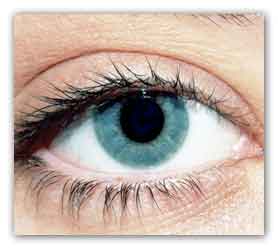News and Insights for
your best life. Online since 1998
- Home Health
- Breaking news
- In caso di...
- Per saperne di
più... - Medicina occidentale
- Medicine complementari
- Medicina cinese
e agopuntura - Omeopatia
- Fitoterapia

New research in The FASEB Journal suggests that by using molecular imaging probes that target the surface of small blood vessels, diabetic retinopathy can be detected at the molecular level
A new study identifies a novel strategy to diagnose the leading cause of blindness in adults, diabetic retinopathy, before irreversible structural damage has occurred. This advance involves quantifying the early molecular changes caused by diabetes on the endothelium of retinal vessels. Using new probes developed by scientists, they were able to distinguish the early molecular development of diabetic retinopathy.

"My goal is to establish a versatile clinical tool that alerts of a disease process right when the first molecular changes take place. This will then provide ample opportunity to act, as opposed to merely acknowledge that there is structural damage that we cannot do anything about," said Ali Hafezi-Moghadam, M.D., Ph.D., a researcher involved in the work from the Center for Excellence in Functional and Molecular Imaging at Brigham and Women's Hospital and Harvard Medical School in Boston, MA. "Here, we have shown it in an important disease, the diabetic retinopathy, but there is no reason to stop there."
Hafezi-Moghadam and colleagues identified a target on the intraluminal surface of the retinal vessels that is expressed at higher levels in diabetes. They found significantly more vascular endothelial growth factor receptor 2 (VEGFR-2) in the diabetic micro-vessels compared to control. They then custom-generated molecular probes and characterized their binding properties. Light-based live imaging was then used to quantify binding interaction.
An unexpected finding in this work was that not only was VEGFR-2 higher in the retinas of diabetic animals as well as humans, but the molecule was found in the retinal micro vessels, not in the larger vessels.
When the imaging probes were injected into the blood stream of living normal and diabetic animals, they circulated throughout the animal's vasculature. With the help of live imaging of the retinal vessels, it was possible to visualize the interaction of individual probes with their endothelial targets.
The probes transiently interacted with the intraluminal surfaces. In comparison, control probes with a surface moiety that does not interact with the inner vascular lumen freely flowed through the retinal micro vessels. Since the probe interaction with the inner vessel wall can be deduced to individual molecular interactions, the information gained from this study provides quantitative knowledge of target molecules in the retinal micro vessels.
For more information
Dawei Sun, Shintaro Nakao, Fang Xie, Souska Zandi, Abouzar Bagheri, Mozhgan Rezaei Kanavi, Shahram Samiei, Zahra-Soheila Soheili, Sonja Frimmel, Zhongyu Zhang, Zsolt Ablonczy, Hamid Ahmadieh, and Ali Hafezi-Moghadam. Molecular imaging reveals elevated VEGFR-2 expression in retinal capillaries in diabetes: a novel biomarker for early diagnosis. FASEB J. September 2014 28:3942-3951; doi:10.1096/fj.14-251934.
MDN
del Dott. Turetta
Quali sono i problemi o le disfunzioni che possono giovarsi di un intervento omeopatico d'urgenza e, di conseguenza, come dovrebbe essere un ideale armadietto medicinale omeopatico casalingo.- Home -
- Health -
- Depressione -
- Sexuality
- Environment -
- Food -
- Musica -
- Capirsi -
- Grafologia -
- Ridere
Copyright © 1998/2018 www.mybestlife.com tutti i diritti sono riservati eccetto quelli già di altri proprietari.
.In caso di
Pubblicità
Per saperne di più su
Pubblicità
Pubblicità
Pubblicità
Pubblicità


